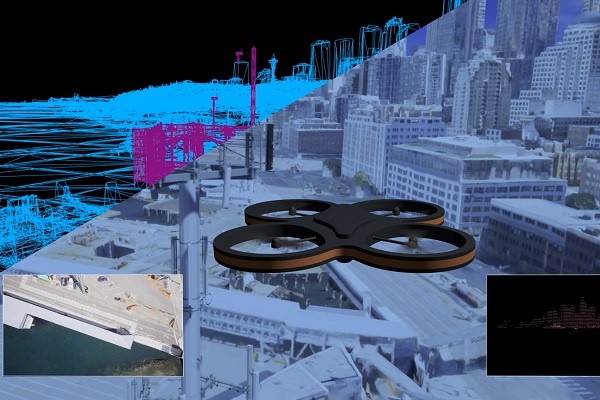Microsoft Launches Drone AI Training Metaverse

Microsoft has unveiled a new metaverse project for training AI to pilot drones called Project AirSim. The virtual world mimics realistic physics in a three-dimensional environment as a way to train autonomous drones piloted by AI more quickly without any of the risks that come from deploying them in the real world.
Machine Learning Metaverse
Training an AI as a pilot usually requires running the algorithm through actual piloting exercises so that it can learn about how to move the drone around in the same conditions it will face after the training. That includes avoiding birds and power lines, adjusting for wind and rain, and otherwise reacting appropriately to the vagaries of flight. The inevitable damage or destruction of the drones early on has been an unavoidable cost for autonomous drones, but Microsoft’s Project AirSim is applying recent advances in physics modeling for the virtual worlds of the metaverse to mitigate those risks by simulating reality well enough to train the AI in digital space.
“Everyone talks about AI, but very few companies are capable of building it at scale,” Project AirSim engineering lead Balinder Malhi said. “We created Project AirSim with the key capabilities we believe will help democratize and accelerate aerial autonomy – namely, the ability to accurately simulate the real world, capture and process massive amounts of data and encode autonomy without the need for deep expertise in AI.”
Metaverse Methods
Project AirSim began as an Unreal Engine open-source project in 2017 for simulating autonomous vehicle training. The new platform combines Microsft Azure’s processing with Bing Maps environmental data. Simulation software developer Ansys helped with designing the physics engine, while graphical modeling developer MathWorks connects the virtual environment with the physics models created by AirSim clients like autonomous drone firms Airtonomy and Bell. The idea of bringing training for AI or humans into the metaverse is quickly gaining traction. The U.S. Air Force has taken steps to set up a training area in the metaverse for its human pilots by trademarking Spaceverse as a “secure digital metaverse” where it could potentially prepare pilots, human or otherwise, for future missions. And Microsoft has made the industrial metaverse a significant pillar of its future services, particularly in production and repair, including the training to do so.
“Autonomous systems will transform many industries and enable many aerial scenarios, from the last-mile delivery of goods in congested cities to the inspection of downed power lines from 1,000 miles away,” Microsoft corporate vice president for business incubations in technology and research Gurdeep Pall said. “But first we must safely train these systems in a realistic, virtualized world. Project AirSim is a critical tool that lets us bridge the world of bits and the world of atoms, and it shows the power of the industrial metaverse – the virtual worlds where businesses will build, test and hone solutions and then bring them into the real world.”
Follow @voicebotai Follow @erichschwartz
Microsoft Scores $22B Army Contract for Hololens-Based AR Smart Googles








